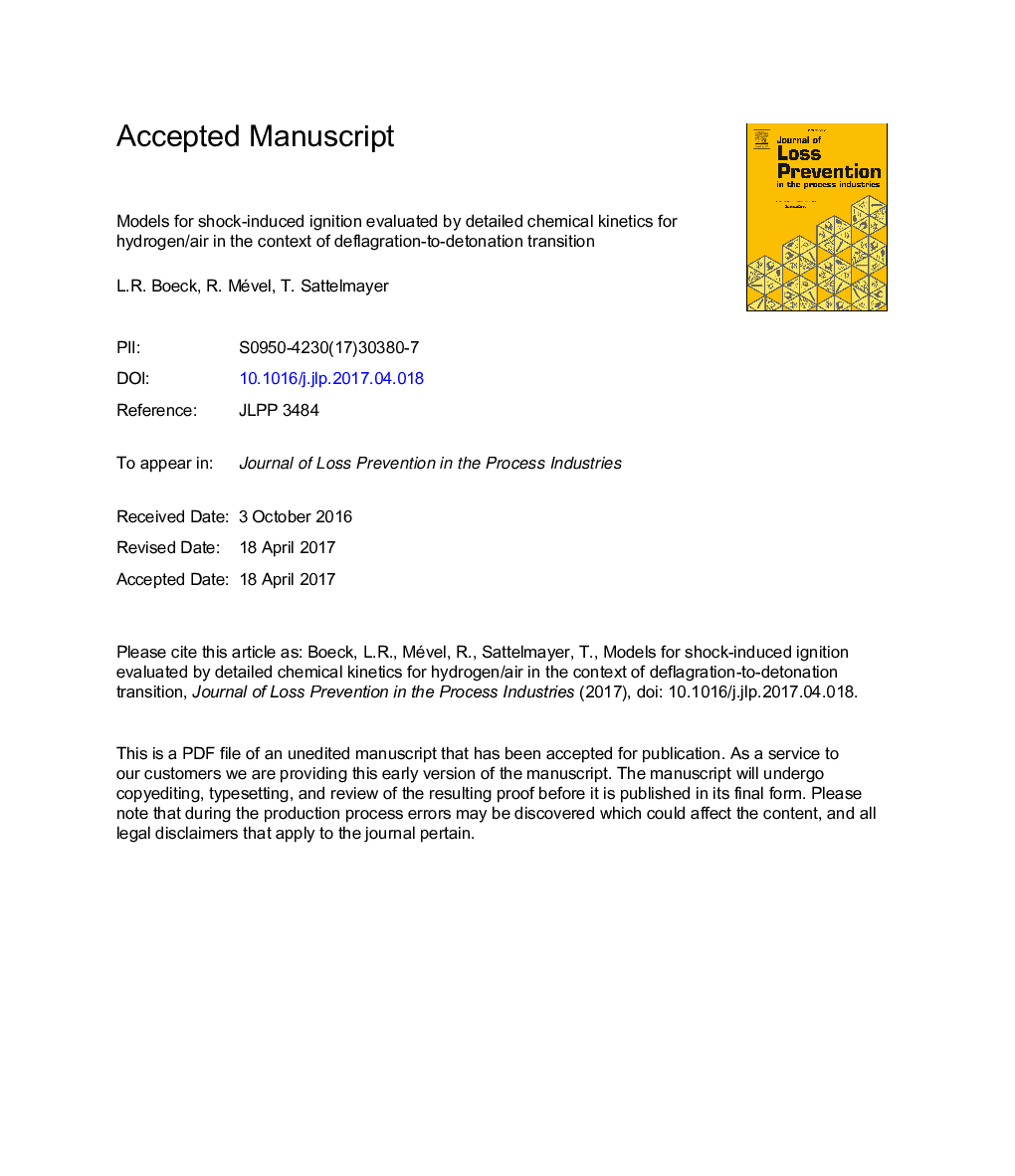| کد مقاله | کد نشریه | سال انتشار | مقاله انگلیسی | نسخه تمام متن |
|---|---|---|---|---|
| 4980271 | 1367826 | 2017 | 18 صفحه PDF | دانلود رایگان |
عنوان انگلیسی مقاله ISI
Models for shock-induced ignition evaluated by detailed chemical kinetics for hydrogen/air in the context of deflagration-to-detonation transition
ترجمه فارسی عنوان
مدل های احتراق بوجود آمده توسط شوک توسط سینتیک شیمیایی دقیق برای هیدروژن / هوا در زمینه تغییر گذر از انفجار
دانلود مقاله + سفارش ترجمه
دانلود مقاله ISI انگلیسی
رایگان برای ایرانیان
کلمات کلیدی
سینتیک شیمیایی، انتقال جابجایی به انفجار، هیدروژن، آتش سوزی ناشی از شوک، احتراق قوی، آتش سوزی،
موضوعات مرتبط
مهندسی و علوم پایه
مهندسی شیمی
بهداشت و امنیت شیمی
چکیده انگلیسی
Deflagration-to-detonation transition can occur in industrial explosions involving highly reactive gas mixtures such as H2/air. Large degrees of confinement and congestion support strong flame acceleration and the transition to detonation. Various mechanisms can accomplish the onset of detonation, such as mixing processes and instabilities or shock-induced ignition. This paper focuses on ignition by normal shock reflection. Two ignition modes behind reflected shock waves are distinguished: strong ignition, which enables direct detonation initiation; and weak ignition, leading to distributed ignition kernels (deflagrations). Models for the prediction of ignition modes by Voevodsky and Soloukhin, Meyer and Oppenheim, Radulescu et al., Grogan and Ihme, and Thomas et al., are evaluated and compared using a state-of-the-art detailed chemical kinetic scheme. Based on these models, critical incident shock Mach numbers leading to strong ignition are determined. Similarities and deviations between these models are discussed and strategies for future experimental work are proposed.
ناشر
Database: Elsevier - ScienceDirect (ساینس دایرکت)
Journal: Journal of Loss Prevention in the Process Industries - Volume 49, Part B, September 2017, Pages 731-738
Journal: Journal of Loss Prevention in the Process Industries - Volume 49, Part B, September 2017, Pages 731-738
نویسندگان
L.R. Boeck, R. Mével, T. Sattelmayer,
